Red eared sliders, also known as red-eared sliders, or red-eared terrapins, are the most popular species of pet turtle. These common creatures are actually a subspecies of pond slider, and are native to the southern United States.
Because of their popularity as a pet, they are actually becoming a problem as an invasive species. Their primary danger as an invasive species is outcompeting native species for resources. Read on to learn about the red eared slider.
Description of the Red Eared Slider
These turtles typically grow no longer than 8 in. long, but the occasional specimen will exceed 16 in. or more. They have rounded, oval shaped shells that are streamlined rather than domed, allowing them to swim efficiently.
Their color changes as they age, beginning as a lighter green and darkening over time. Their most distinguishing feature is the bright red stripe behind their eye, giving them the name “red eared” slider.
Interesting Facts About the Red Eared Slider
These popular pets are beginning to become an invasive issue, and for good reason! They are hardy creatures, and quite well adapted to survival.
- Brrrr! – Aquatic reptiles rather dislike the cold, and winter temperatures can restrict the range of many species. This is because they cannot regulate their temperature internally, but must use the sun and heat to warm themselves. When things get too cold, these turtles will burrow into the bottom and go into brumation, which is a semi-hibernation.
- Lifelong Friend – Most pet owners fail to realize that these turtles can live well over 20 years, but only when cared for properly. Unfortunately, their popularity as a pet is something of a throwaway. People purchase a little turtle for a child, it never receives proper care, and dies young. When given adequate nutrition, swimming space, and the proper heating, some individuals have lived up to 50 years!
- Sad Story – Another unfortunate end to many pet turtles’ lives is the release into a local pond or waterway. In areas outside of this species’ natural range, this can result in death for the turtle, or an increase in the invasive population. Invasive populations cause native species to decline and suffer.
- Salmonella – When handling these turtles it is important to remember that they can carry the bacteria salmonella. Always wash your hands after handling, and monitor young children to prevent potential ingestion of bacteria. Turtles under four inches long are no longer allowed to be sold because of the risk of young children putting them in their mouths.
Habitat of the Red Eared Slider
Red-eared sliders are native to warm areas of freshwater. They prefer water bodies without too much moving water, rather than choppy or swiftly moving sources. It is common to see them in ponds, lakes, marshes, swamps, streams, and small rivers or tributaries. Their home must have plenty of areas to haul out of the water and bask in the sun, like fallen trees and riverbanks.
Distribution of the Red Eared Slider
Their natural range spans across the southern United States from Texas, to The Panhandle of Florida, and north along the Mississippi River. They can be found as far north as the Mississippi River and its tributaries run. Their range naturally extends as far north as Illinois.
these turtles exist as an invasive species in a number of different locations across the country. There is a large invasive population in Florida, the northeast, portions of Michigan, New Mexico, Arizona, across California, and a number of other U.S. states. In addition to the United States, feral populations exist in Asia, Guam, Australia, Israel, South Africa, the Caribbean, and more.
Diet of the Red Eared Slider
These turtles are omnivores, and will take advantage of both meat and plant food sources. In the wild they will feed on a combination of aquatic vegetation, small fish, carrion, frogs, and more. They are highly opportunistic, and will eat just about anything that they can find. As pets they will eat virtually anything, so it is important to feed them only what is healthy for them!
Red Eared Slider and Human Interaction
Humans interact with these turtles frequently, both as pets and in wild and invasive situations. As pets, these turtles are friendly and interactive. In the wild, they are sometimes displaced or killed by habitat destruction, and hit by cars.
Their invasive populations are wreaking havoc in areas that they have established populations. These turtles will outcompete native wildlife and spread disease, causing overall population decline of many species.
Domestication
This species may be considered semi-domesticated. They have been selectively bred for friendliness for decades, possibly since the 1940s. While this breeding might qualify for classification as semi-domesticated, they are not considered a domestic animal.
Does the Red Eared Slider Make a Good Pet
Yes, these turtles can make excellent pets. However, it is important to remember that they are not a throwaway pet to give to a child for a few years. With proper care and nutrition, these turtles can live well over 20 years. Make sure to do your research before purchasing one, and you could have a scaly pal for years to come.
Red Eared Slider Care
In aquariums, these turtles have a few important needs. They must be provided with plenty of swimming space – the more, the better. A 5-inch turtle should have no less than 50 gallons of water to explore, and plenty of aquatic vegetation.
They must also have a water filtration system, heater, areas to climb out of the water, and a basking lamp. You should choose a commercial diet to ensure they receive all the proper nutrients, and supplement that with vegetables, shrimp, mealworms, crickets, and even thawed pinky mice.
Behavior of the Red Eared Slider
In the wild, the daily life of a turtle is relatively simple. They emerge from their sleeping place in the water and climb onto a nice sunny log. Then, they spend a few hours basking in the sun to warm their bodies up.
Once they are nice and warm, they forage for food until they get cool again, and repeat the process. In human care, they can be very personable and friendly, especially when handled frequently.
Reproduction of the Red Eared Slider
These turtles breed in the water, but lay their eggs on land. Females will bask for longer while the eggs are developing to provide extra warmth. Larger females can lay as many as 30 eggs per clutch, and a single female can lay up to 5 clutches per year if conditions are right.
The eggs will incubate for 59 – 112 days, and after hatching the young hatchling will remain out of the water for 21 days before beginning to swim. This is because they must absorb their yolk sac prior to entering the water.

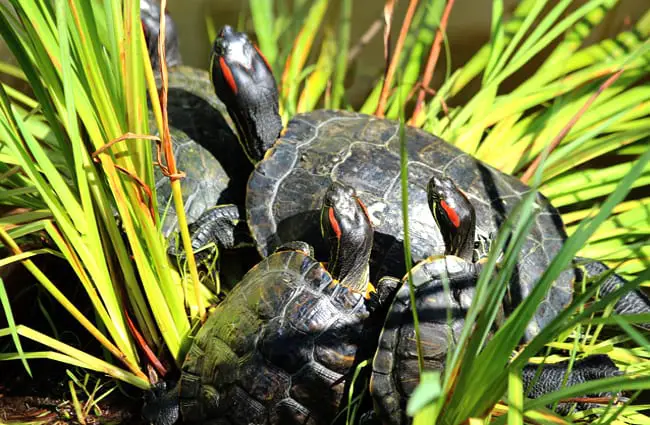
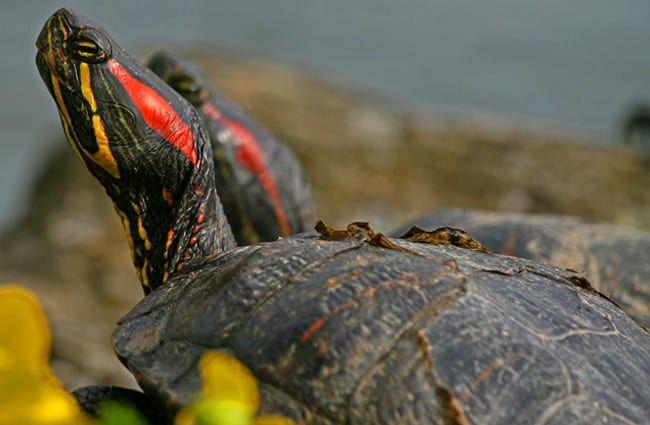
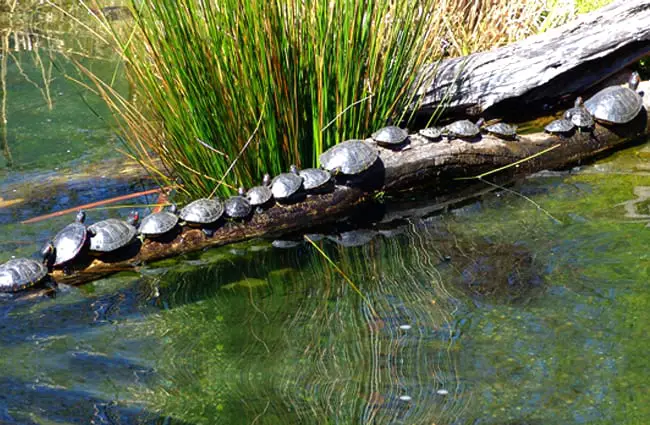

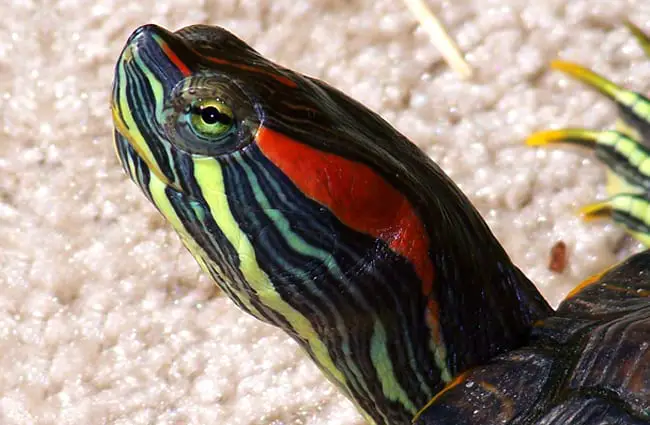

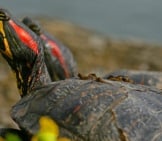



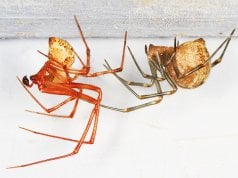
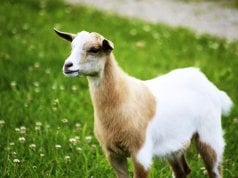











![Red Angus Closeup of a beautiful Red Angus cowPhoto by: U.S. Department of Agriculture [pubic domain]https://creativecommons.org/licenses/by/2.0/](https://animals.net/wp-content/uploads/2020/03/Red-Angus-4-100x75.jpg)

